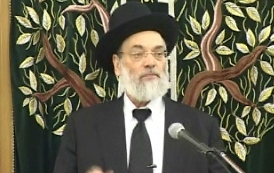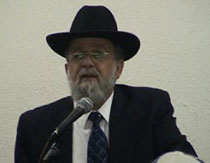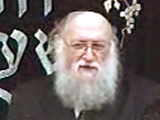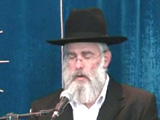Beit Midrash
- Sections
- Chemdat Yamim
- Bemare Habazak - Rabbis Questions
- Shabbat and Holidays
- Laws of Shabbat
- The Melachot
Answer: Avoiding suspense – it is clearly permitted. One reason for our confidence is that while charger plates may be new, fish or appetizer plates sitting on top of main plates and are then removed, have been common, without poskim over the generations being bothered. We now set out to identify the precise reason(s).
Ostensible borer is permitted when three conditions are met: the desired is taken from the undesired; it is done soon before usage; it is done by hand. The classic usage of a plate is to serve on it; you are taking the plates right after their use, not soon before the next meal. Even if you were to wash them right away and use them later on Shabbat, selecting them specifically among other objects in a taarovet (mixture) of utensils would not be considered for immediate use (Orchot Shabbat 3:121).

Bemare Habazak - Rabbis Questions (627)
Rabbi Daniel Mann
443 - Is a Second Netilat Yadayim Necessary?
444 - Borer on Plates
445 - Behavior during Kedusha of Street Minyanim
Load More
The Terumat Hadeshen (57) suggests that there is no borer between relatively large foods in close proximity to but clearly discernable from each other. However, he stops short of permitting this in practice, and the Rama (Orach Chayim 319:3) concurs.
Yet, Rav Ovadia Yosef (V, OV 31) is lenient regarding silverware due to a combination of (weaker and stronger) possible leniencies. 1) According to the Aruch Hashulchan (OC 319:9) borer does not apply to big pieces that are clearly discernable; the Ohr Sameach (Shabbat 8:11) posits similarly that borer does not apply for almost all intents and purposes to utensils or clothes (even according to the Taz (OC 319:12) that it is not limited to food). 2) The Pri Megadim (319, MZ 2) says that if the various objects being sorted will all be used at the same time in the future, it is permitted. 3) Perhaps (it is a fringe opinion) borer only applies to things that "grow" from the ground. 4) Selecting for the next meal is considered short term no matter when that meal is. Leniencies 1 &3 apply to this case, whereas #2 and #4 do not (at least at the last meal the plate will be used). Thus, one cannot prove from Rav Ovadia’s responsum that he would be lenient here. While the Tzitz Eliezer (XII:35) also considers the Ohr Sameiach’s position a significant contributor towards leniency, the Mishna Berura (319:15) and Shemirat Shabbat K’hilchata (3:78) do not.
However, we are confident that all poskim would not consider the two plates sitting one on the other to be a taarovet, for the following reason. Everyone agrees with the Terumat Hadeshen’s basis thesis that objects that are touching but absolutely separate are not a taarovet. His and the Rama’s hesitation was because it is not always easy to know the level of ease of discerning. In our case, though, since the normal usage of these plates is to have a normal plate sitting on top of a charger plate, one can "separate" them with zero concentration and blindfolded with ease. This idea is at the heart of the aforementioned Yabia Omer and Tzitz Eliezer.
We find a close precedent in the distinction between books piled on a table and those in their place and/or labeled in a bookcase (Shemirat Shabbat K’hilchata 3:(179); Orchot Shabbat 3:23-4). While the Shemirat Shabbat K’hilchata is hesitant to use the leniency, taking off the right plate is far easier than grabbing for the right sefer (I not infrequently reach for one book and take its neighbor). The strong logic is only strengthened by the minhag regarding fish plates.

Ask the Rabbi: Mincha after Sunset
Rabbi Daniel Mann | Cheshvan 5786

Ask the Rabbi: Purim Meshulash
Rabbi Daniel Mann | Adar 5785

Ask the Rabbi: Forgot to Remove Tefillin Before Musaf of Rosh Chodesh
Rabbi Daniel Mann | Kislev 5786

Ask the Rabbi: Yissachar and Zevulun for Mitzvot
Rabbi Daniel Mann | Tammuz 5785

Rabbi Daniel Mann

Pay for Overtime on Shabbat
5773

Calling a Kohen Who is a Katan
Av 22 5777

A Mourner Serving as Chatan Torah
5775


























